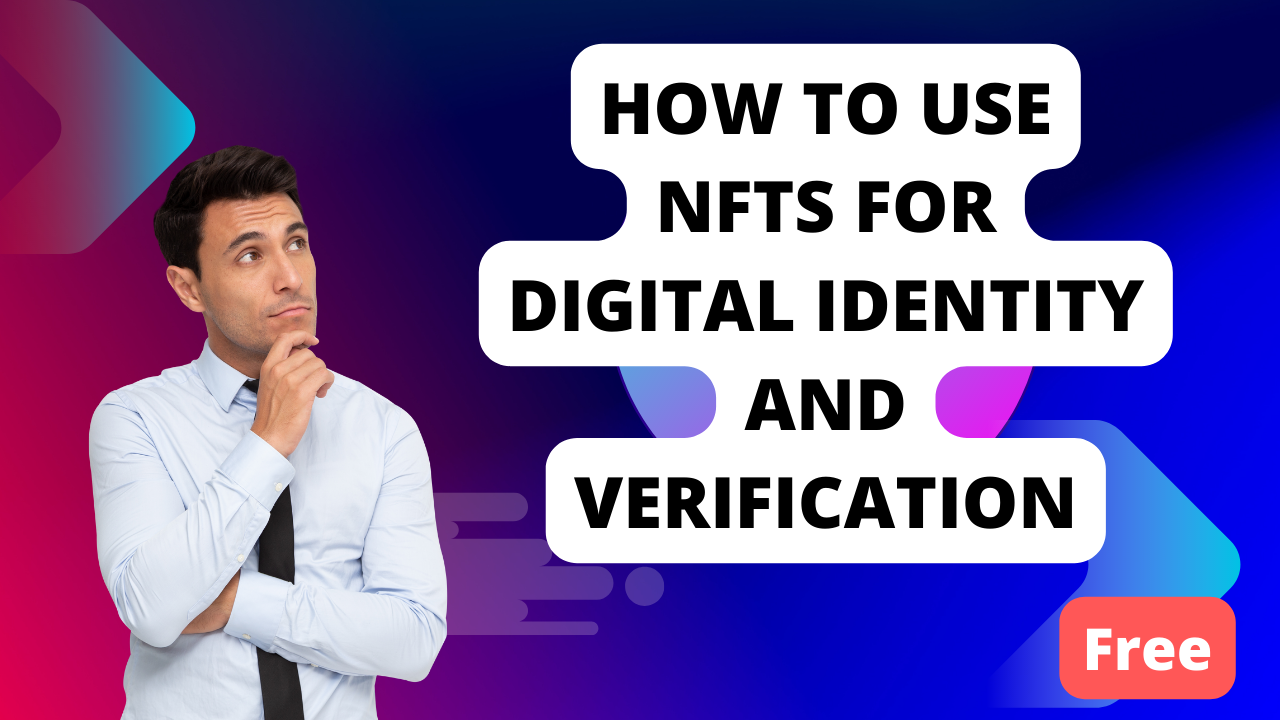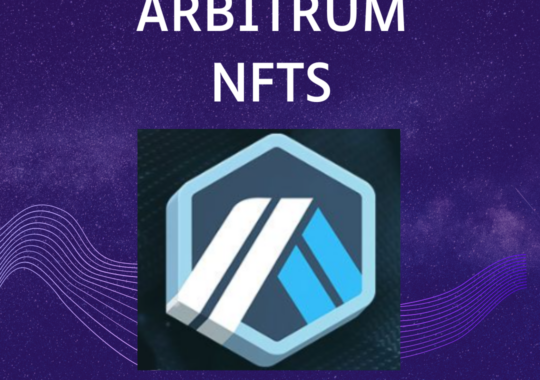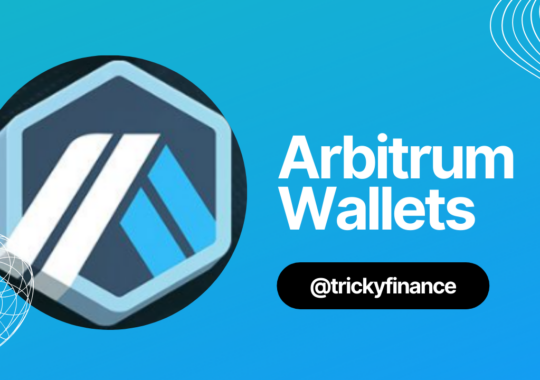There is a rising need for safe and trustworthy ways to establish us identify online in the age of digital identity and verification. Here we have Non-Fungible Tokens, or NFTs, the newest lingo in the computer world. NFTs have the potential to completely transform the way we verify our digital identities, even though they are most frequently connected to the world of digital art and collectibles. We will discuss how NFTs can be used for digital identity and verification in this post and how they might well hold the key to a more secure and decentralized online environment.
Brief overview of NFTs for digital identity and verification
In the digital age, identity verification has become a crucial aspect of online security. Non-fungible tokens (NFTs) have emerged as a promising solution for digital identity and verification. NFTs are unique digital assets that are verified on the blockchain, providing an unalterable and secure record of ownership. This technology has the potential to revolutionize the way we verify our identity online, enabling secure and transparent transactions without the need for intermediaries. NFTs could also provide a new means of proving ownership of digital assets such as artwork or music, making it easier for artists and creators to monetize their work. As the world becomes increasingly digital, the importance of secure and trustworthy identity verification will only continue to grow, and NFTs are poised to play an important role in meeting this challenge.
Digital identity and verification
The importance of digital identity and verification cannot be overstated. In today’s world, many critical transactions occur online, including banking, healthcare, and even voting. But the lack of a reliable digital identity can prevent individuals from accessing essential services and opportunities, such as applying for a loan or finding a job.
However, traditional methods for digital identity and verification have their challenges. One significant issue is the use of usernames and passwords. While these are the most commonly used forms of digital identity verification, they are also the most vulnerable. Cybercriminals can easily obtain passwords through phishing schemes or brute force attacks. Additionally, usernames and passwords are easily forgotten, leading to frustration and wasted time for both users and service providers.
Another challenge is the lack of standardization in digital identity verification methods. Different platforms and service providers often use different verification systems, which can be confusing for users and make it difficult to maintain a consistent digital identity across different contexts. This lack of standardization also makes it challenging for service providers to verify the identity of their users, leading to delays and errors in transactions.
In conclusion, as technology continues to evolve, it is crucial to develop new and innovative digital identity and verification systems that are secure, user-friendly, and standardized across different platforms and contexts.
How NFTs can be used for digital identity and verification
We use usernames, passwords, and other digital credentials to prove our identity and access various online services. However, these traditional methods of identity and verification are not foolproof and can be vulnerable to hacking and identity theft. This is where NFTs, or non-fungible tokens, come in.
NFTs are digital tokens that are unique and cannot be replicated. They are based on blockchain technology, which makes them tamper-proof and secure. Unlike other, NFT is one-of-a-kind and can be used to represent ownership of digital assets such as art, music, and even virtual real estate.
Using NFTs for digital identity and verification has numerous benefits.
- First, NFTs provide a secure and decentralized way of proving ownership and authenticity. Since NFTs are based on blockchain technology, they cannot be manipulated, duplicated or counterfeited, which makes them ideal for verifying identity and ownership.
- Second, NFTs can be used to create a portable and interoperable digital identity. This means that users can carry their digital identity with them wherever they go and use it across multiple platforms and services without having to create new accounts or identities. This can save users time and effort and reduce the risk of identity theft.
- Third, NFTs can also provide a more transparent and auditable way of verifying identity and ownership. Since every transaction involving an NFT is recorded on the blockchain, it can be easily traced and audited, which can provide a higher level of trust and confidence in digital identity and verification.
In conclusion, NFTs have the potential to revolutionize digital identity and verification by providing a secure, portable, and auditable way of proving ownership and authenticity.
Creating and managing NFTs for digital identity and verification
The emergence of Non-Fungible Tokens (NFTs) has brought a new solution to this challenge. NFTs can be used to create and manage digital identities, providing a secure and transparent way to verify individuals’ credentials and personal information.
To create an NFT for digital identity and verification, first, you need to determine the relevant information to include, such as name, photo, and contact details. Then, select a blockchain platform that supports NFT creation, such as Ethereum or Binance Smart Chain. Next, create a smart contract that will define the parameters of the NFT and assign a unique token ID to it.
When managing NFTs for digital identity and verification, it is essential to follow best practices to ensure their security and integrity. These include keeping the private key safe, selecting a reliable and secure blockchain platform, and periodically updating the information contained in the NFT.
In conclusion, creating and managing NFTs for digital identity and verification provides an innovative solution to traditional identity management challenges. By following a step-by-step guide and implementing best practices, individuals and organizations can create and manage secure and transparent digital identities.
Potential challenges and future of NFTs for digital identity and verification
The integration of NFTs in various area also poses some potential challenges and risks that need to be addressed. One of the main concerns is the potential for fraud or identity theft, as NFTs can be replicated or forged. Additionally, the lack of regulatory frameworks and standards may lead to inconsistencies and discrepancies in the use of NFTs for digital identity and verification.
Despite these challenges, the future of NFTs in digital identity and verification seems promising. With advancements in blockchain technology, it is becoming increasingly possible to create secure and tamper-proof digital identities using NFTs. Moreover, the potential for interoperability between different blockchain networks could lead to the creation of a universal system for digital identity and verification. As NFTs continue to gain mainstream adoption, it is likely that we will see more innovative use cases and applications of NFTs in this space.
FAQs
What are the benefits of using NFTs for digital identity and verification?
NFTs offer several benefits, including increased security and privacy, reduced fraud and identity theft, and improved convenience and efficiency. By using NFTs for digital identity verification, individuals and businesses can also save time and money by streamlining the verification process and eliminating the need for third-party verification services.
How can NFTs be created for digital identity and verification?
NFTs can be created using various blockchain platforms such as Ethereum, Binance Smart Chain, and Solana.
Are there any legal considerations to using NFTs for digital identity and verification?
As with any emerging technology, there may be legal considerations when using NFTs for digital identity and verification. It is important to ensure compliance with data protection and privacy laws, as well as regulations around the use of blockchain technology.
Can NFTs be transferred or sold?
Yes, NFTs can be transferred or sold just like any other digital asset. However, it is important to ensure that the NFT is being transferred or sold with the consent of the owner and that any intellectual property rights are being respected.
How can businesses use NFTs for digital identity and verification?
Businesses can use NFTs to verify the identity of their employees, customers, and partners. They can also use NFTs to certify the authenticity of their products, services, and intellectual property.
How can individuals use NFTs for digital identity and verification?
Individuals can use NFTs to verify their identity, qualifications, and skills, which can be useful when applying for jobs, licenses, and other opportunities.
Are NFTs secure?
NFTs are generally considered to be secure, as they are stored on a decentralized blockchain and cannot be replicated or duplicated.
What is the future of NFTs for digital identity and verification?
As more businesses and individuals become aware of the benefits of using NFTs for digital identity and verification, it is likely that the demand for these services will continue to grow.
Also read:
How to Use NFT Marketplaces for Buying and Selling
Conclusion

Neelam is a talented writer and financial analyst, currently studying at Hansraj College. She is a regular contributor to Trickyfinance, where she covers a range of topics including price prediction, stock market news, and market analysis. Neelam’s passion for finance and economics led her to pursue a writing career in the financial industry, where she has gained valuable experience and insights into the workings of the market. In her free time, Neelam enjoys reading and conducting her own market analysis to stay up-to-date with the latest trends and developments in the industry.




